
Teacher tip 101: Building a strong class community is key. That’s one of the first things you learn in education classes and therefore, early in the school year, teachers are thinking about how to make their classrooms places where kids want to be and can learn to their best ability. Teachers get to know the kids, the kids get to know each other, they learn routines and rules, and build a new class community.
We want kids to work well together and successfully think through tasks. While we do these things to help the classroom run smoothly as a whole, taking some time to build a strong math class community can help our students soar in math.
Today I wanted to share three tips for building a strong math community in your classroom. I know some of you have already started school for the year, but it’s not too late! These tips are great for any time you’re ready to dive in. And if you haven’t returned to school yet, well, now is the perfect time to get started. Let’s go!
Tip 1: Norms for Your Math Class Community
Just like we create rules for the classroom as a whole, we want kids to know what is expected during math specifically. My favorite way to set norms after an early-in-the-year lesson. After a typical math lesson for our classroom, we spend time thinking and talking about what the lesson was like and how that matches (or doesn’t) what math will look like for the rest of the school year.
Here’s how I do it: I pick a lesson that I know will resemble a typical lesson in my classroom. I also try to pick a lesson during which kids are on task, working well together, and working well independently. I also try to select a lesson that highlights different learning settings: whole group, small group, and maybe even some 1:1 conversations.
At the end of the lesson, I have students sit down for a class meeting and I ask them to reflect on what happened. I ask students what the lesson looked like and sounded like. As the kids share, I fill out a T-chart. I make sure we cover the following:
- What are kids doing? What does that sound like?
- What are the teachers doing? What does that sound like?
- What does it look like when kids are working?
- What does it look like/sound like when we have a class discussion?
- What does it look like/sound like when we have partner discussions or partner work?
Focusing on what math looks like and sounds like is much more concrete for students and makes it more likely they’ll be able to meet our norms. A norm like “Stay on task” is vague because staying on task will look different during direct instruction than it will during a partner game. Making these distinctions clear sets us all up for success.
Once we finish our looks like/sounds like conversation, we come up with a list of norms for math. They are based on the T-chart we created and I am intentional about phrasing them positively. So instead of “Don’t get distracted by other conversations,” we might state, “Stay focused on your partner.”
Like I do with our class rules, I leave our math norms up in the room to refer to. If I can, I’ll leave it up all year, but we know wall space is precious and that’s not always an option. In that case, I save it and pull it back out to review after a school break or whenever students need a refresher.
Tip 2: What do mathematicians do?
My second tip is to help students see themselves as “math people.” Now we all know adults who will proudly say that they are not math people (break my heart), so you know that it can be big lift to get students to say they are math people. So, how do we do this??
My first step every year is to make mathematicians so much more relatable for children. This lesson can continue for a week or more. On the first day, we spend some time brainstorming what mathematicians do. I write down each idea on chart paper and keep it for the rest of the lessons. Most kids will say all kinds of things like,
- Solve equations
- Write numbers
- Use calculators
- Write on paper a lot
A rare few will start to name what we’re really getting at: play, investigate, work together, try something, change their minds, share their ideas, use tools, organize their thinking, make plans, etc. Of course, the students who are picturing a stereotypical mathematician aren’t necessarily wrong, but let’s consider which list is more relatable and inviting.
Are you ready for how I begin to shift our thinking from the stereotypical mathematician to a person who can problem solve and work collaboratively? Let’s go!
Each day after that first brainstorming lesson, I introduce a new mathematician and what they do. Let me give you an example: Robert Lang has studied the math of origami. He used what he learned and applied it to real-world contexts. I briefly introduce students to Robert Lang and some of his work. Then I emphasize that he is a mathematician even though part of what he does looks like (and is!) art. He investigated the patterns found in the art of paper folding and has shared his ideas with others. So two things mathematicians do is investigate and share their ideas.
This same day we do a related activity that allows kids to investigate and share their ideas. Some students might enjoy learning how to make an origami creation and then investigating making their own creations. Another option might be to have students investigate a new math manipulative. After about 10 minutes of investigation, have students share what they noticed and what they think the manipulative would be helpful for.
After a few of these lessons, we go back to that initial brainstorm list and add to it making it easier for kids to see themselves in those actions. Helping kids see that math does not have to look like sitting at a table and writhing numbers and equations makes math so much more relatable to those that don’t feel like “math people.”
Tip 3: Discussions in a Strong Math Class Community
My last tip is to help kids safely discuss their ideas with each other. It can feel like a huge risk for people to share their ideas, especially if they aren’t completely sure about what they are sharing. The thing is, sometimes we aren’t sure about how to solve a problem, but we have an idea that might help someone else get closer to solving that problem. When that person shares their connection, it can help the first person grow their ideas. It can often be a domino effect. When students work together and push each others’ thinking, it can lead them to some big learning!
Creating this safety definitely connects back to the norms we talked about in the first tip, but it also has to do with supporting students in how to share their ideas. Oftentimes, they don’t even know how to have an academic discussion! So, I have found sentence stems to be really helpful. Here are some of my favorites:
- My first step was…
- I agree/disagree because…
- The strategy or tool I used was…
- Another strategy would be…, because…
- My answer makes sense because…
Having a way to start what they are saying makes it easier for kids to format their ideas. Sometimes just getting started is the hardest part.
Then I teach kids how to give each other wait time. Just like adults, some kids take up a lot of air time and others are more comfortable being quiet. I am explicit with students about this reality. I have them reflect on where they see themselves on the participation spectrum. Later, we discuss how sharing air time can be as easy as pausing before speaking or using a sentence starter to share their thinking. Once we get going, I lean into discussions even more!
Teaching kids how to have discussions can help students feel like their ideas are valued, leading to a stronger math class community.
Whether you’re getting ready to start a new school year or in the middle of the year, these tips can help strengthen your math classroom community. We know that students thrive when they feel a sense of belonging so building a strong community during our math block can help our students thrive in their math learning.
Have any other tips for building a strong math class community? I know we’d all love to hear from you in the comments!

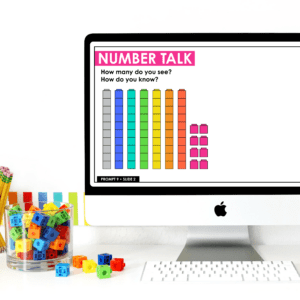
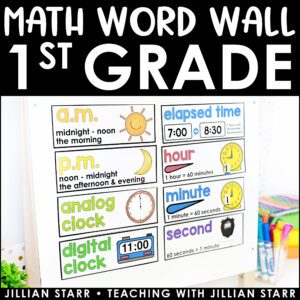
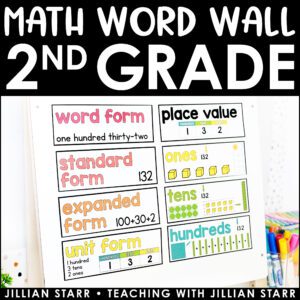
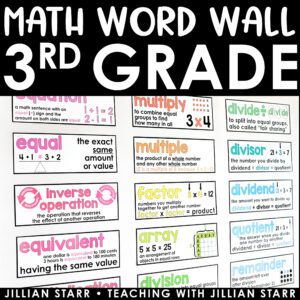
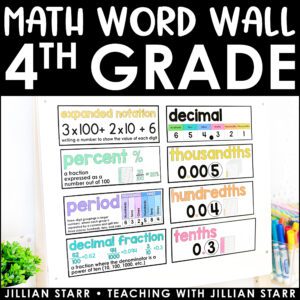
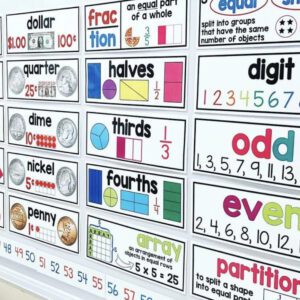
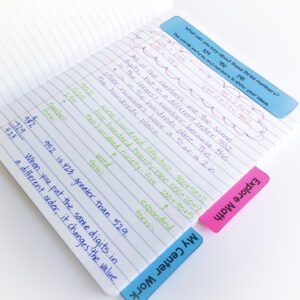



Leave a Comment